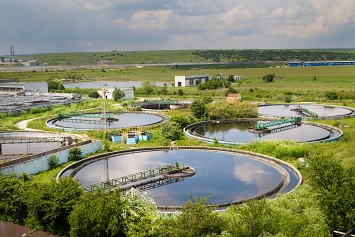On May 6, 2020, the Senate’s Environment and Public Works Committee (EPW) unanimously approved—by identical votes of 21–0—two bipartisan bills that, combined, would invest nearly $20 billion in wastewater infrastructure projects and community drinking water improvements.

America’s Water Infrastructure Act of 2020 (AWIA) (AWIA 2020) would authorize $17 billion to fund infrastructure projects across the country.
The Drinking Water Infrastructure Act of 2020 would reauthorize Safe Drinking Water Act programs that provide an estimated $2.5 billion to support drinking water infrastructure and provide resources and technical assistance to communities facing critical drinking water needs.
EPW Heads Agree
Senators who introduced the bills include John Barrasso (R-WY), the EPW’s Chair, and Tom Carper (D-DE), the Ranking Member.
“These two bills will be critical to our economic recovery after the immediate pandemic response is behind us,” said Barrasso. “[AWIA 2020] will help deepen nationally significant ports, maintain the navigability of inland waterways, fix aging dams and irrigation systems, and upgrade waste water systems across the country. [The Drinking Water Infrastructure Act of 2020] requires that 20 percent of the Drinking Water State Revolving Funds be used on grants, no interest loans, or debt relief to help public water systems. The provision will give struggling systems a chance to provide safe and reliable drinking water to their communities.”
“The two bills that we reported out of our committee today unanimously included authorizing the Clean Water Revolving Loan Fund for the first time since 1987,” said Carper. “The States invest the money out of those funds, but we haven’t reauthorized the Clean Water Revolving Fund, which focuses less on drinking water and more on cleaning water, reducing the effluent it is putting out in our community.”
“In the drinking water bill, a corollary, we also authorized more than a half billion dollars to provide critical drinking water infrastructure through the Small and Disadvantaged Communities grant program,” added Carper.
The EPW released a fact sheet that lists the following highlights of the bills:
AWIA 2020
The draft bill would:
- Cut red tape by setting a 2-year goal for the U.S. Army Corps of Engineers to complete feasibility studies for potential projects.
- Help deepen nationally significant ports and maintain the navigability of inland waterways.
- Adjust the cost share for the Inland Waterways Trust Fund for project construction costs and major rehabilitation of locks and dams.
- Increase water storage in the West and build new flood management infrastructure in the Midwest.
- Fix aging dams and irrigation systems and upgrade wastewater systems across the country, including those of Native American tribes.
- Create a mechanism by which the Corps will develop a list of approved projects that can be funded through the Congressional appropriations process.
- Allow the Corps to recommend funding for projects with lower benefit-to-cost ratios if the projects serve a small, financially disadvantaged or rural community.
- Increase authorizations for technical assistance and training grant programs at the EPA for purposes of providing technical assistance to rural, small, and tribal municipalities.
- Reauthorize the successful Water Infrastructure Finance and Innovation Act (WIFIA) program administered by the EPA to finance shovel-ready water infrastructure projects.
- Reduce air pollution emissions at ports and wastewater treatment facilities through improved energy technologies and increased energy efficiency.
Drinking Water Infrastructure Act of 2020
The draft bill would:
- Reauthorize the Safe Drinking Water Act emergency fund to provide resources and technical assistance to communities facing drinking water emergencies that present substantial danger to health.
- Increase funding for the EPA’s Assistance for Small and Disadvantaged Communities Grant Program.
- Codify appropriations language that requires a state to use 20 percent of the Drinking Water State Revolving Loan Funds it receives to provide grants, no-interest loans, or forgiveness of loan principal or to buy, refinance, or restructure debt.
- Make it simpler for schools and childcare programs to test for lead in their drinking water by empowering the local water utility to do testing.
- Authorize $300 million in grants to assist in the remediation of emerging contaminants, with a focus on perfluoroalkyl and polyfluoroalkyl substances (PFAS).
- Provide robust funding for grant programs to help water utilities invest in and deploy new and emerging, but proven, technology essential to improve water and energy efficiency, reduce emissions, and expand ratepayer affordability. Also authorize $15 million annually for the EPA’s Water Infrastructure Resiliency and Sustainability Grant Programs.
